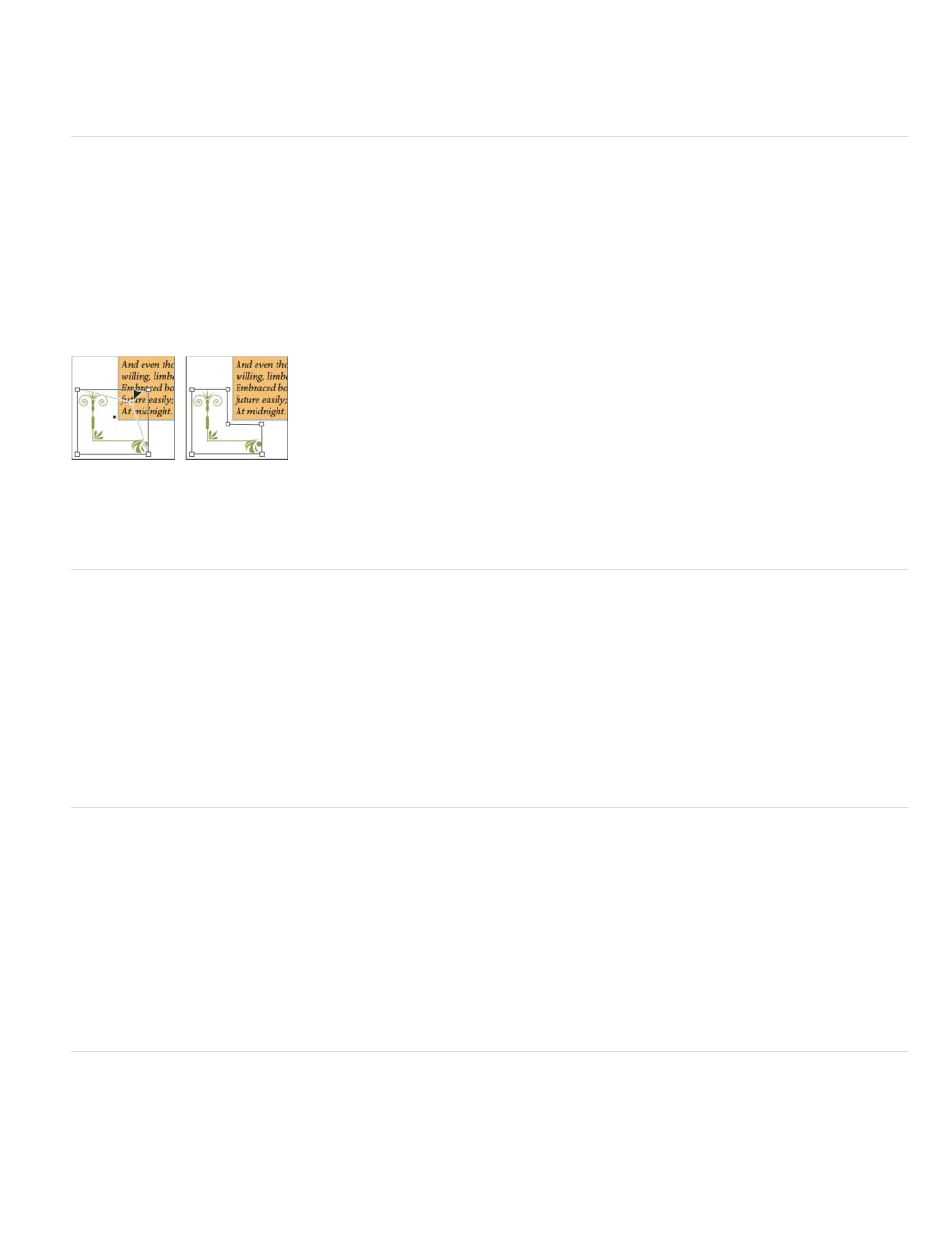Trapping imported vector graphics, Trapping text, Maximizing trapping performance – Adobe InDesign User Manual
Page 753: Setting aside disk space for built - in trapping

Note:
The behavior and precision of trapping within an OPI workflow depends on many factors, such as the downsampling method the OPI server
uses to generate FPO images. For best results, consult with your OPI vendor for information about integrating Adobe trapping solutions with the
vendor’s OPI server.
Trapping imported vector graphics
Both Adobe In-RIP Trapping and built-in trapping can trap text and graphics created with InDesign tools and placed vector PDF files. However,
built-in trapping cannot trap placed vector EPS graphics.
The text, paths, and frames you create in InDesign won’t trap correctly if they overlap a frame containing a placed graphic that built-in trapping
won’t trap, such as vector EPS graphics. (However, those objects will trap correctly with Adobe In-RIP Trapping.) You may be able to use built-in
trapping with documents containing vector EPS graphics if you adjust the graphic’s frame. If the placed EPS graphic isn’t rectangular, try reshaping
the frame closer to the graphic itself, and away from other objects. For example, you might choose Object > Clipping Path to fit the graphics frame
more tightly around the graphic.
InDesign text and graphics that overlap placed EPS graphics (left) won’t trap correctly; to achieve good trapping, reshape the frame so that it
doesn’t touch other objects (right).
Trapping text
Both the Adobe In-RIP and built-in trapping engines can trap text characters to other text and graphics. (Built-in trapping requires that the text and
graphics are created with InDesign, and aren’t contained in imported graphics.) A text character overlapping different background colors traps
accurately to all of the colors.
Adobe In-RIP Trapping can trap all types of fonts. In contrast, built-in trapping works best with Type 1, OpenType, and Multiple Master fonts only;
using TrueType fonts may result in inconsistent traps. If your document must use TrueType fonts and you want to use built-in trapping, consider
converting all TrueType text to outlines by selecting the text and choosing Type > Create Outlines. The text will become InDesign objects that trap
reliably. Text can’t be edited after you convert it to outlines.
Maximizing trapping performance
Whether you use Adobe In-RIP trapping or built-in trapping, you can save time by not processing pages that don’t need trapping, such as pages
containing black text only. You can use trap presets to enable trapping only for the page ranges that require it.
The speed with which built-in trapping is accomplished depends on the speed of your computer system. If you’re trapping every page of a long
document, use the fastest computer system you have. Built-in trapping also makes extensive use of your computer’s hard disk, so a fast hard disk
and data bus will benefit the built-in trapping engine.
To maximize the time your computers are available for other tasks, consider using Adobe In-RIP Trapping, which processes all traps at the RIP,
instead of at your computer.
Setting aside disk space for built-in trapping
To trap the edges of every color that requires trapping, the trapping engine creates a large number of paths that are used only by the output
device (the paths are not stored in your document). While Adobe In-RIP Trapping processes and stores these additional paths at the RIP, built-in
trapping uses your computer’s hard disk as a temporary storage area for these trap paths. Before you use built-in trapping, make available as
748